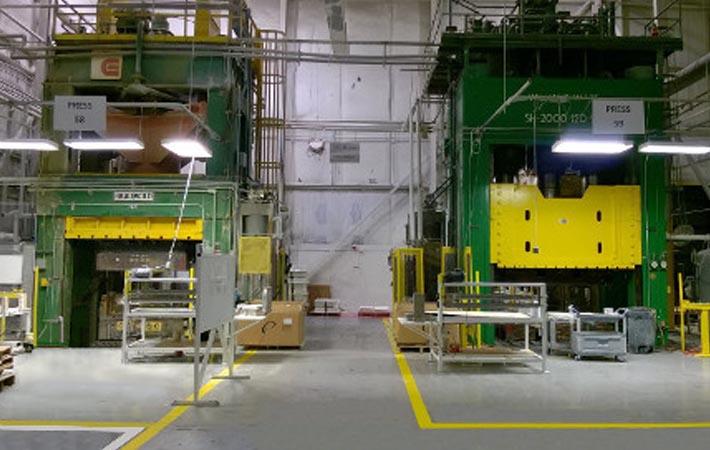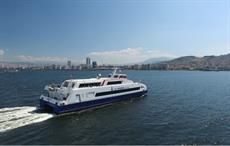Carver Non-Woven Technologies, supplier of single- and multi-layer/material non-woven products, is to begin commercial production of pre-impregnated, preconsolidated glass-mat thermoplastic (GMT)-type composite products using its versatile non-woven mat technology. Installation of a double-belt laminator/press from Sandvik is near complete for the purpose.
The new equipment - double-belt laminator/press from Sandvik TPS Composite Solutions division of Sandvik AB (Sandviken, Sweden) - will begin commercial production in mid-August and will enable Carver to supply preconsolidated continuous roll goods and precut sheets to the half of its customer base using infrared (IR) heaters prior to molding non-wovens with thermoplastic matrices into three-dimensional (3D) shapes.Carver Non-Woven Technologies, supplier of single- and multi-layer/material non-woven products, is to begin commercial production of pre-impregnated, preconsolidated glass-mat thermoplastic (GMT)-type composite products using its versatile non-woven mat technology. Installation of a double-belt laminator/press from Sandvik is near complete for the purpose.#
Double-belt laminators are widely used to produce prepregs and unidirectional tapes with fiberglass or carbon fibre reinforcement. Such equipment also is used to consolidate glass fibre and carbon fibre mats, webs, or cross-ply reinforcements (including fabrics and non-wovens using commingled polymer-based fibres) with thermoplastic or thermoset matrices.
When older IR ovens are used with traditional non-wovens, fibres are exposed to heat throughout the thickness of the web (not just on top and bottom surfaces) and for a longer duration than typically is seen with contact heating, the preferred method. This can prove problematic for unconsolidated non-wovens – especially thermally sensitive formulations containing natural fibres (which can burn/carbonise) or thermoplastic fibres like polypropylene (which can shrink, sag, or even melt) during the preheating cycle. In cases where molders cannot justify the capital expense of installing contact heating systems, changing to pre-impregnated and preconsolidated non-wovens provides several benefits. First, thermoplastic fibers experience less shrinkage, so molders need not buy as wide a roll or sheet of product, thereby saving money. Second, the preconsolidated products heat faster, which reduces both time and energy requirements during preheating and molding while reducing risk of damage to the materials.
As supplied, conventional non-wovens feature fibre layers that are needle punched to mechanically intertwine and interlock fibres, resulting in a fluffy, air-filled mat that is hard to heat efficiently. Carver’s twin-belt lamination line will initially start with the ability to combine up to six layers of different fibres into a single resin-impregnated, preconsolidated sheet where all layers are thermally and chemically interlocked and ready to be molded (the preferred method for interior trim panels, headliners, and underbody shields in the automotive market) or cut and used as is (the preferred method for sidewalls, flooring, and roofing systems in the recreational vehicle (RV) market). In fact, Carver expects to focus a significant amount of production of these new materials on the RV market, where GMT-type composites are an excellent alternative to wood-fibre products since they are much lighter and more damage tolerant, and will not absorb moisture or rot. Furthermore, unlike wood-fibre products, Carver’s preconsolidated composites are low in volatile organic compounds (VOCs) and free of formaldehyde, and unlike sheet-molding compound (SMC) composites, they contain no styrene.
“Our decision to start offering preconsolidated non-wovens means that molders can use our high-quality Carver products without having to make the capital investment to add contact heaters,” explains Mark Glidden, president, R3 Composites and Carver Non-Woven. “By broadening our offering, no matter which heating mechanism a molder is using, we now have a product that should work in that facility. The new system we’re installing will give us high throughput while also providing very accurate control of temperature and pressure. That way, there aren’t a lot of residual mechanical or thermal stresses on the material, so we maintain excellent product quality and consistency.”
Sandvik’s high-capacity and highly automated TPS double-belt laminator/press systems are designed to enable all stages of non-wovens production to be carried out continuously in a single short cycle, including heating, reaction, pressing, and cooling. This has obvious benefits in terms of productivity as well as in accurate control and adjustment of process parameters to provide a high-quality, consistent end-product. Additionally, the high quality and precision control of the Sandvik laminator will allow Carver to take shrinkage (residual stresses) out of the web as it is being produced.
“Shrinkage of non-wovens made on low-cost laminators can be so high that customers end up having to purchase rolls that are six-eight inches wider than they need just to compensate for the dimensional changes,” adds Glidden. “With the type of laminator we purchased, customers have reported seeing a 50-60 per cent decrease in product shrinkage, which can really make a difference in a molder’s productivity.” (SV)
Fibre2Fashion News Desk – India


